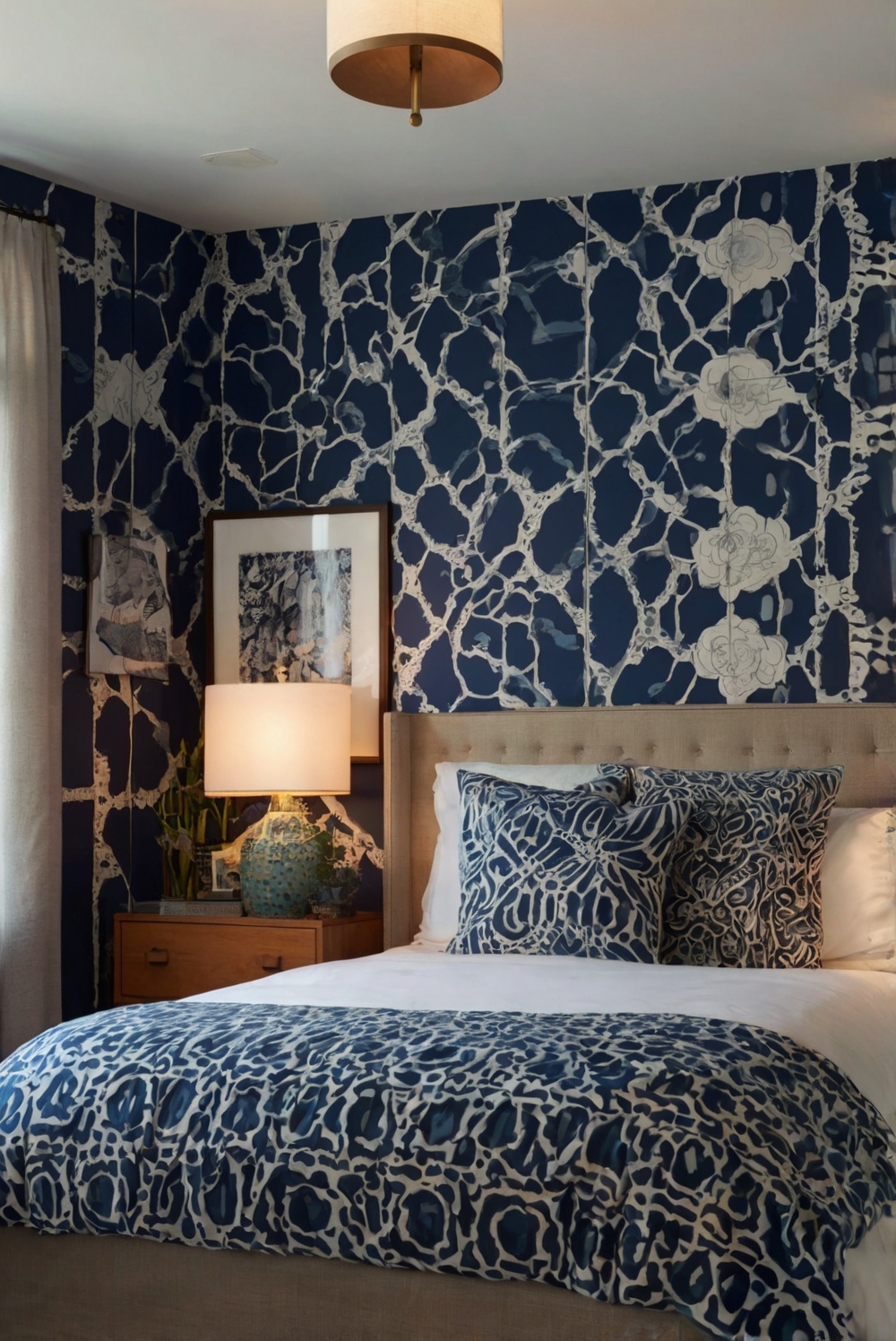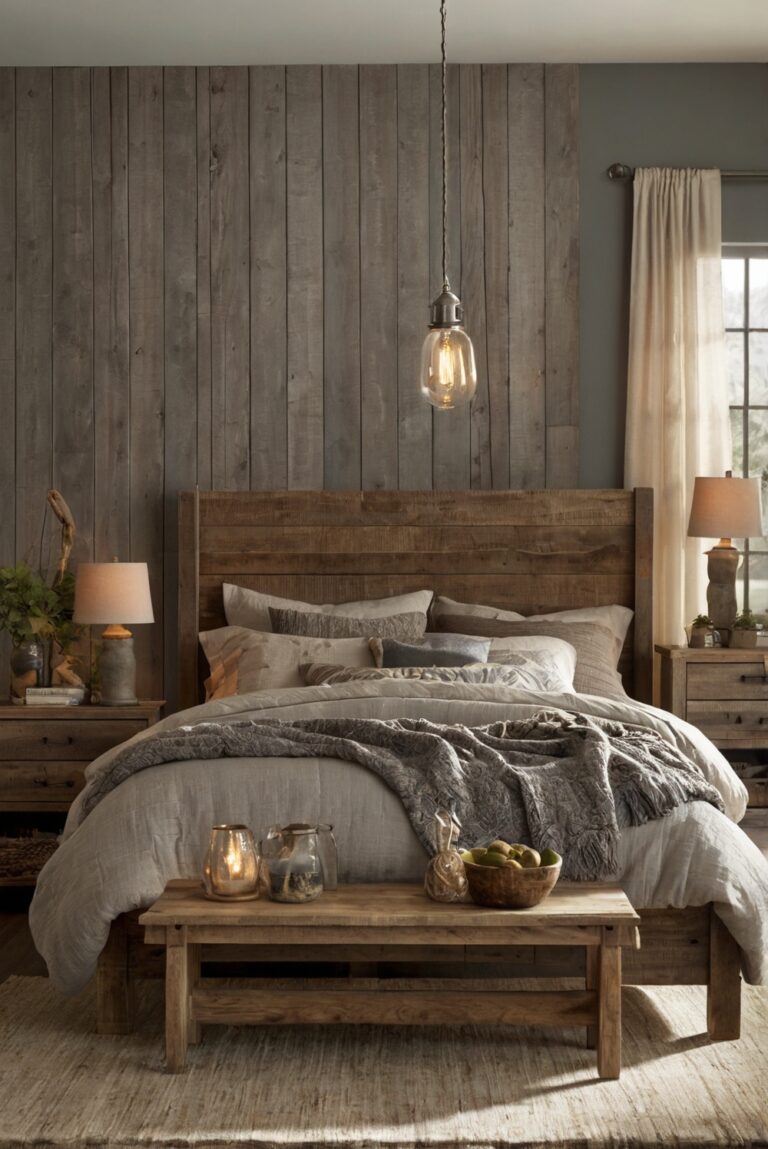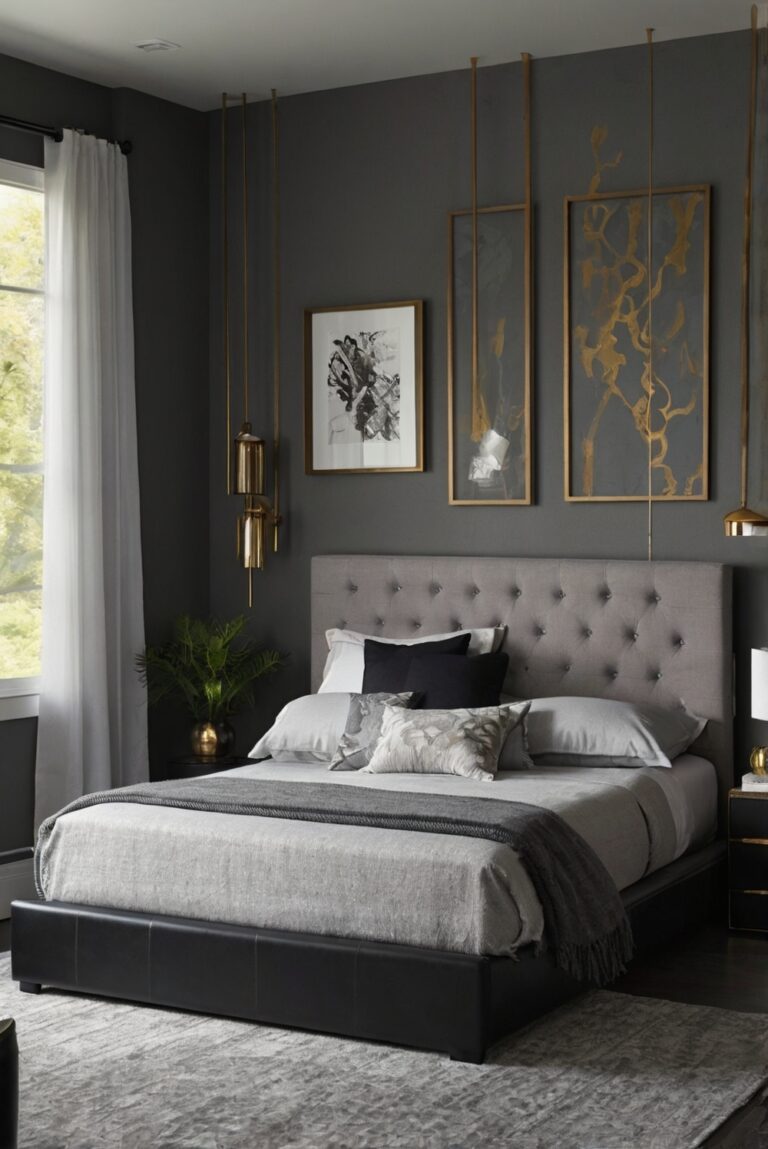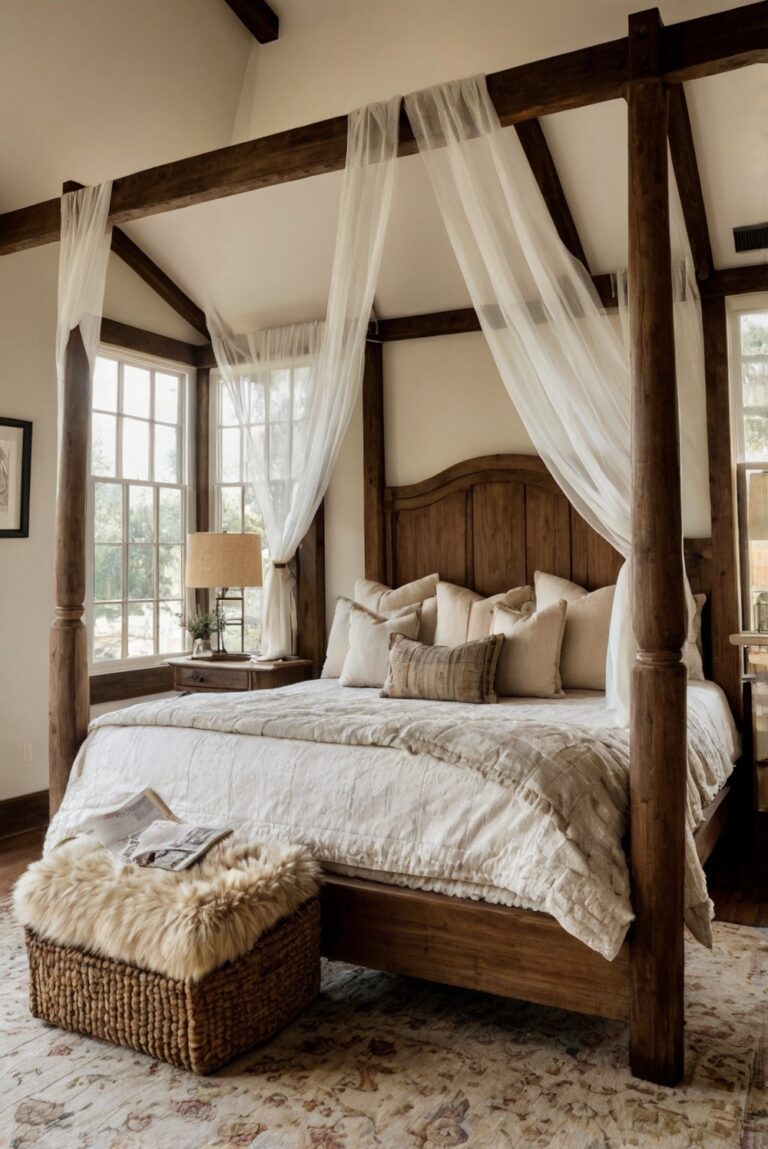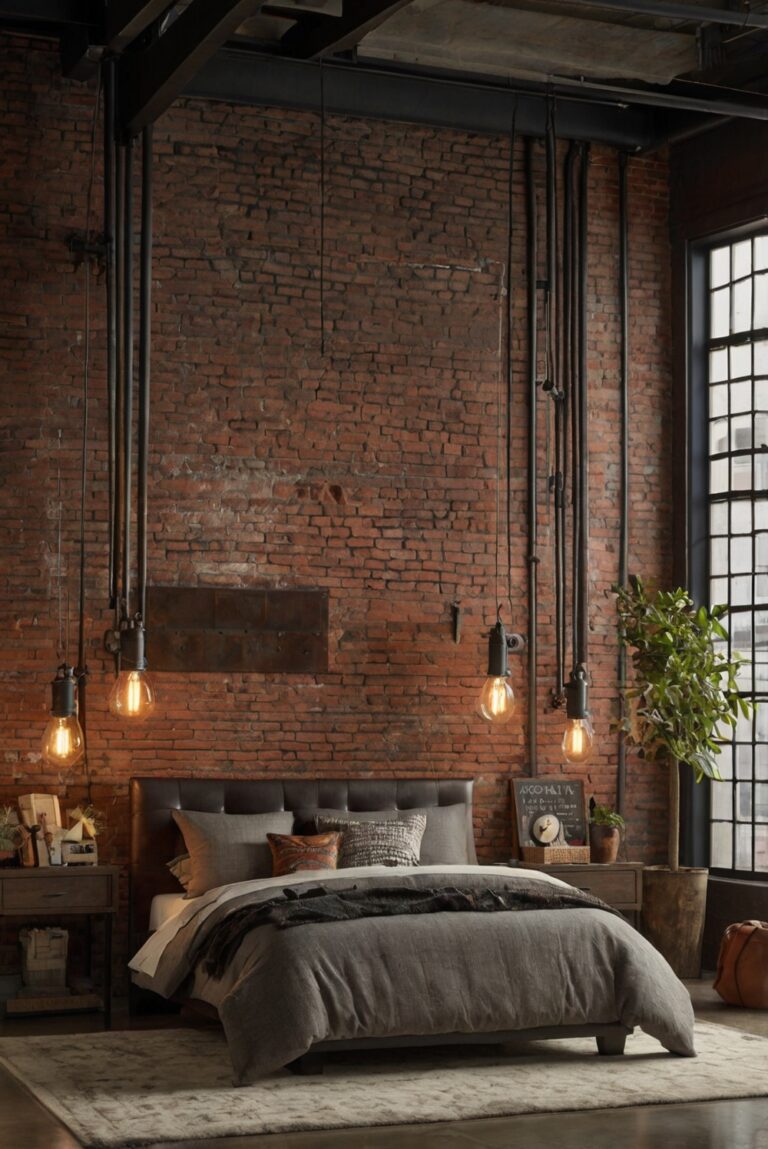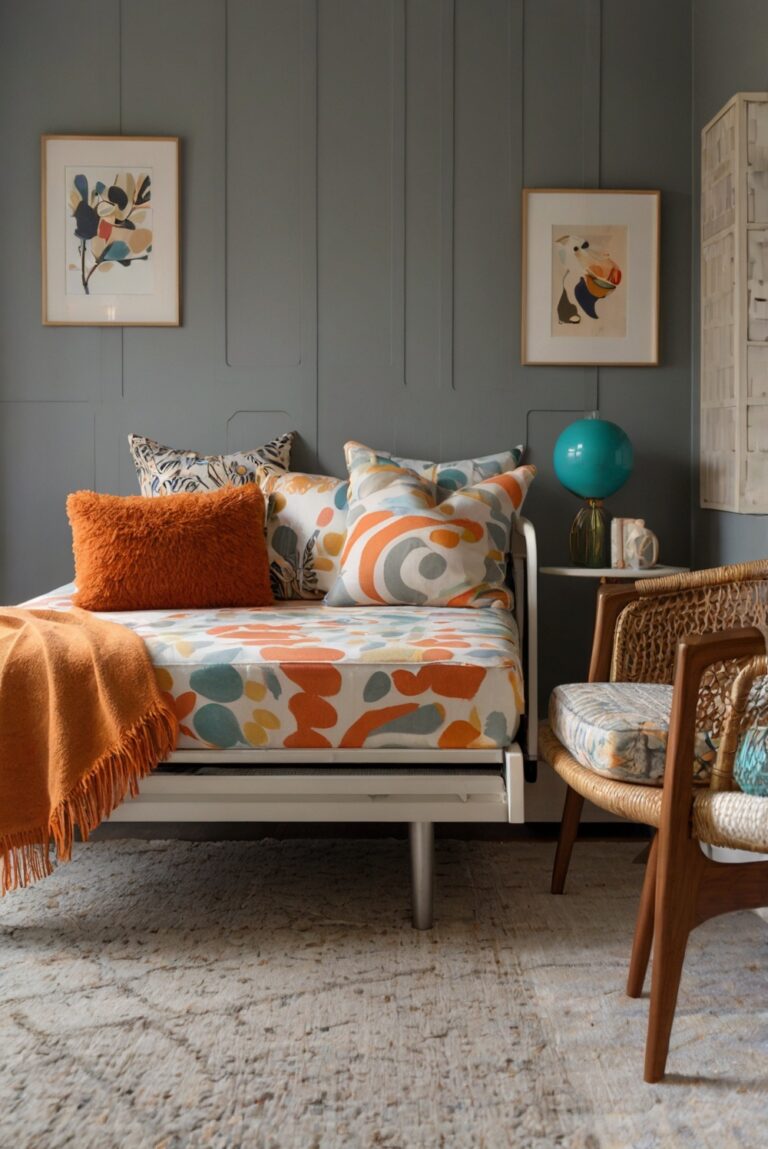Learn how to design a space-saving bedroom for small spaces with these daily interior designer routines. Create a stylish and functional room with smart décor choices.
How to Design a Space-Saving Bedroom for Small Spaces?
Answer:
To effectively design a space-saving bedroom for small spaces, it is essential to utilize smart furniture solutions such as built-in storage units, loft beds, and wall-mounted shelves. Opt for multipurpose furniture like a fold-out desk or a bed with storage underneath. Use light and neutral colors to create an illusion of a larger space. Maximize natural light by choosing sheer curtains or no window treatments at all. Consider using mirrors to reflect light and visually expand the room. Proper organization is key; declutter regularly and keep belongings in designated storage areas. Planning the layout and function of the bedroom in advance will ensure a well-organized and aesthetically pleasing space.
When it comes to home decorating and interior design, space planning plays a crucial role in optimizing the functionality and aesthetics of a room. Designers often utilize clever tricks to make small spaces appear larger and more inviting. The careful selection of furniture, color schemes, and accessories can transform even the tiniest bedroom into a cozy retreat. By incorporating elements like built-in storage and multifunctional furniture, you can create a space-saving bedroom that meets your needs without compromising style.
Some key points to remember when designing a space-saving bedroom for small spaces include:
1. Use furniture that serves multiple purposes and provides storage.
2. Opt for light and neutral colors to make the room feel more spacious.
3. Maximize natural light and incorporate mirrors to create the illusion of a larger space.
4. Declutter regularly and keep belongings organized in designated storage areas.
5. Plan the layout and function of the bedroom in advance to ensure an efficient use of space.
By following these guidelines and incorporating creative design solutions, you can achieve a beautiful and functional space-saving bedroom that maximizes every inch of your small space.
1. Evaluate the Space:
When designing a space-saving bedroom for small spaces, it is crucial to start by evaluating the available space. Measure the dimensions of the room and take note of any architectural features such as windows, doors, and built-in furniture. This evaluation will help you determine the layout and placement of furniture and storage solutions.
2. Choose the Right Furniture:
Selecting the right furniture is essential when designing a space-saving bedroom. Opt for multifunctional pieces such as a bed with built-in storage or a fold-down desk. Consider utilizing vertical space with tall dressers or shelving units to maximize storage without taking up valuable floor space. Additionally, choose furniture with a streamlined design to create a sense of openness in the room.
3. Utilize Vertical Space:
In small bedrooms, it is important to make the most of vertical space. Install shelves or wall-mounted storage units to keep items off the floor and create a more spacious feel. Consider using floating shelves or bookcases to display books and decorative items while maintaining a clutter-free environment. Vertical space can also be utilized for hanging storage solutions such as hooks or pegboards.
4. Opt for Light Colors:
When designing a space-saving bedroom, opt for light colors on the walls, furniture, and decor. Light colors create the illusion of a larger space by reflecting natural light and making the room feel more open and airy. Consider using a neutral color palette with accents of color to add visual interest without overwhelming the space.
5. Maximize Natural Light:
Natural light can make a small bedroom feel more spacious and inviting. Choose window treatments that allow for maximum light penetration, such as sheer curtains or blinds that can be fully opened during the day. Consider placing mirrors strategically to reflect light and create the illusion of a larger space. Additionally, keep windows free of clutter to enhance the flow of natural light throughout the room.
In conclusion, designing a space-saving bedroom for small spaces requires careful planning and consideration of the available space and the needs of the occupant. By evaluating the space, choosing the right furniture, utilizing vertical space, opting for light colors, and maximizing natural light, you can create a functional and visually appealing bedroom that feels spacious and inviting. Remember to prioritize functionality and comfort while incorporating design elements that enhance the overall aesthetic of the room. With these tips in mind, you can transform a small bedroom into a stylish and efficient space that meets your needs and reflects your personal style.
1. What are some key strategies for designing a space-saving bedroom for small spaces?
When designing a space-saving bedroom for small spaces, it is crucial to prioritize functionality and organization. Utilize multi-functional furniture pieces such as storage beds, wall-mounted shelves, and built-in closets to maximize space efficiency. Consider using light, neutral colors to create an illusion of a larger space, and incorporate mirrors to reflect light and create the illusion of depth. Additionally, declutter regularly to maintain a tidy and spacious environment. By implementing these strategies, you can create a stylish and functional bedroom in even the smallest of spaces.
2. How can I maximize storage in a small bedroom design?
Maximizing storage in a small bedroom design is essential to keep the space clutter-free and organized. Consider utilizing under-bed storage containers, vertical shelving units, and hanging organizers to make the most of available space. Invest in furniture pieces with built-in storage features, such as ottomans with hidden compartments or bedside tables with drawers. Additionally, make use of wall space by installing floating shelves or wall-mounted hooks for hanging items. By incorporating these storage solutions, you can optimize the functionality of your small bedroom while maintaining a clean and tidy aesthetic.
3. What are some creative space-saving furniture ideas for small bedrooms?
Innovative space-saving furniture ideas can help maximize the functionality of a small bedroom. Consider investing in a loft bed with a built-in desk or storage underneath to save floor space. Wall-mounted folding desks or tables are also great options for creating a workspace without taking up valuable square footage. Murphy beds that fold up into the wall when not in use are another clever solution for maximizing space in a small bedroom. Additionally, modular furniture pieces that can be rearranged or expanded to fit different needs can provide versatility in a compact space.
4. How can I create the illusion of a larger space in a small bedroom design?
Creating the illusion of a larger space in a small bedroom design involves strategic use of color, lighting, and furniture placement. Opt for light, neutral colors on walls and furniture to make the room feel more spacious and airy. Use mirrors to reflect light and visually expand the room, placing them opposite windows or in dark corners. Choose furniture with exposed legs to create a sense of openness and flow, and avoid bulky pieces that can overwhelm the space. By incorporating these design elements, you can make your small bedroom appear larger and more inviting.
5. What are some tips for organizing a small bedroom to maximize space?
Organizing a small bedroom efficiently is key to maximizing space and maintaining a clutter-free environment. Start by decluttering regularly and donating or storing items that are not frequently used. Utilize storage solutions such as under-bed containers, drawer organizers, and hanging racks to keep belongings tidy and accessible. Consider investing in dual-purpose furniture pieces that offer storage options, such as ottomans with hidden compartments or beds with built-in drawers. Additionally, make use of vertical space by installing shelves or hooks on walls for additional storage. By implementing these organization tips, you can create a functional and visually appealing small bedroom design.

